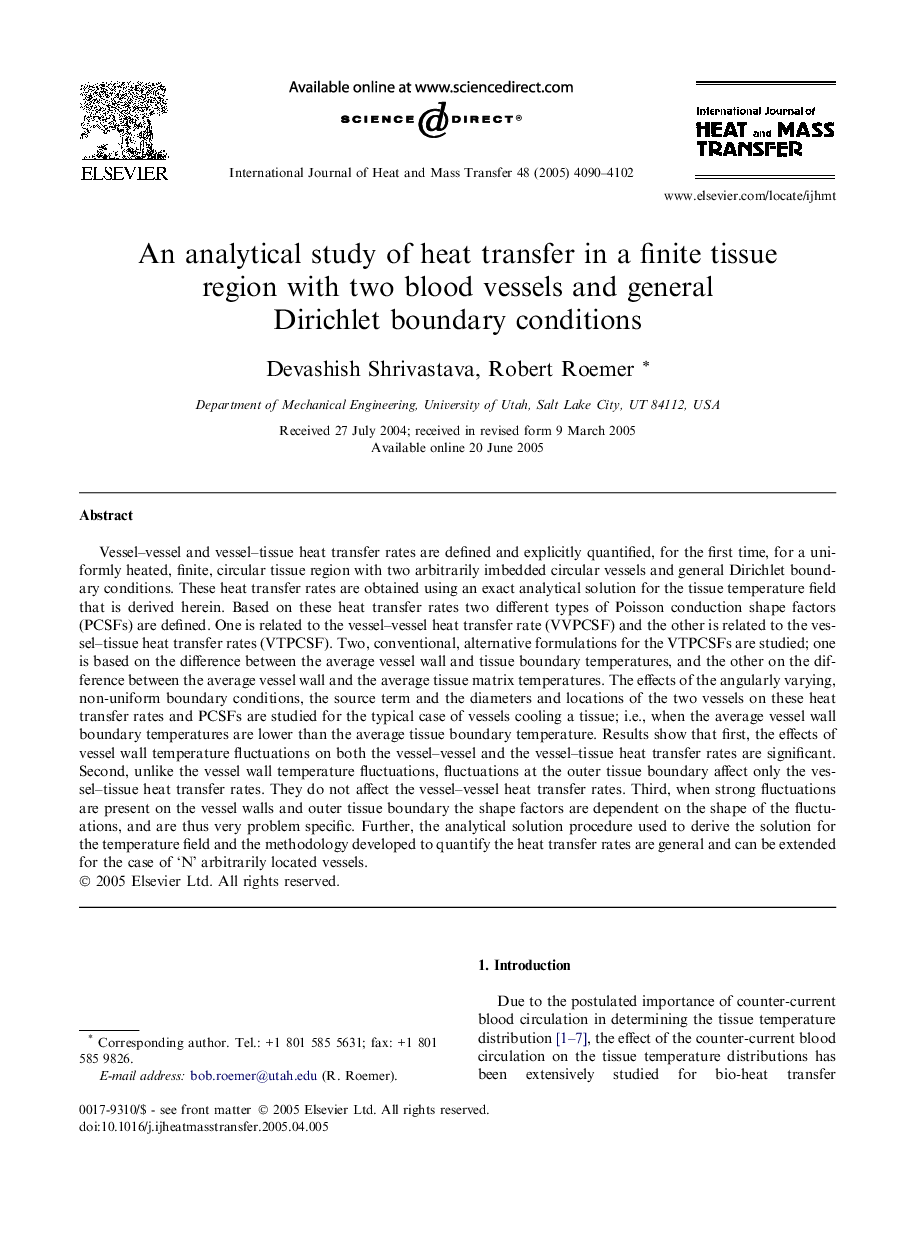| Article ID | Journal | Published Year | Pages | File Type |
|---|---|---|---|---|
| 662943 | International Journal of Heat and Mass Transfer | 2005 | 13 Pages |
Vessel–vessel and vessel–tissue heat transfer rates are defined and explicitly quantified, for the first time, for a uniformly heated, finite, circular tissue region with two arbitrarily imbedded circular vessels and general Dirichlet boundary conditions. These heat transfer rates are obtained using an exact analytical solution for the tissue temperature field that is derived herein. Based on these heat transfer rates two different types of Poisson conduction shape factors (PCSFs) are defined. One is related to the vessel–vessel heat transfer rate (VVPCSF) and the other is related to the vessel–tissue heat transfer rates (VTPCSF). Two, conventional, alternative formulations for the VTPCSFs are studied; one is based on the difference between the average vessel wall and tissue boundary temperatures, and the other on the difference between the average vessel wall and the average tissue matrix temperatures. The effects of the angularly varying, non-uniform boundary conditions, the source term and the diameters and locations of the two vessels on these heat transfer rates and PCSFs are studied for the typical case of vessels cooling a tissue; i.e., when the average vessel wall boundary temperatures are lower than the average tissue boundary temperature. Results show that first, the effects of vessel wall temperature fluctuations on both the vessel–vessel and the vessel–tissue heat transfer rates are significant. Second, unlike the vessel wall temperature fluctuations, fluctuations at the outer tissue boundary affect only the vessel–tissue heat transfer rates. They do not affect the vessel–vessel heat transfer rates. Third, when strong fluctuations are present on the vessel walls and outer tissue boundary the shape factors are dependent on the shape of the fluctuations, and are thus very problem specific. Further, the analytical solution procedure used to derive the solution for the temperature field and the methodology developed to quantify the heat transfer rates are general and can be extended for the case of ‘N’ arbitrarily located vessels.
